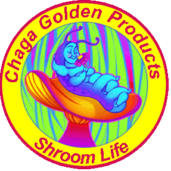Frequently Asked Questions About Wild Chaga
1.) What is Wild Chaga?
- Wild Chaga is a fungus known as (Inonotus obliquus). It is a growth found on Birch Trees in cold climates. Its distinctive appearance resembles a black, woody mass on the tree bark.
2.) How is Wild Chaga traditionally consumed?
- Traditionally, Wild Chaga is consumed as a tea. To make Wild Chaga tea, the harvested fungus is dried, ground into a powder, and then brewed in hot water.
3.) Is tea the best way to consume Wild Chaga?
- Actually, brewing Wild Chaga as a tea Does Not release all the potential bioactive compounds and will limit the benefits you can derive from the Wild Chaga Mushroom. A Full-Spectrum Chaga Tincture/Extract is a far superior way to Help get ALL the potential health benefits from the fungus.
4.) How many potential health benefits are associated with Wild Chaga?
- Wild Chaga is recognized for having Antioxidant, Anti-Inflammatory, and Immune-Modulating Properties. It has been studied for its potential to support Immune Function, reduce Inflammation, and even Prevent the growth of Cancer Cells.
5.) What are the vital bioactive compounds associated with Wild Chaga?
- Wild Chaga contains Polysaccharides (Beta-Glucans), Triterpenes (such as Betulinic Acid), Phenolic Compounds (Flavonoids, Polyphenols), and Melanin. These compounds all contribute to its potential Health Benefits.
6.) Can Wild Chaga prevent or treat cancer?
- While some studies suggest Anti-Cancer Properties in Wild Chaga, it’s important to note that research is in the early stages. Wild Chaga should not be considered a substitute for conventional cancer treatments.
7.) Is Wild Chaga safe for everyone to consume?
- Wild Chaga is a Superfood and is Generally Considered Safe. However, pregnant and breastfeeding women, individuals with autoimmune disorders, and those on certain medications should consult with a healthcare professional.
8.) Can Wild Chaga be used for skin conditions?
- The Antioxidant Properties of Wild Chaga, particularly Melanin, are considered to have Significant Benefits For the Skin. Some skincare products incorporate Wild Chaga extracts to protect against UV radiation and oxidative stress. These products typically come in Balms, Lotions, and Soaps.
9.) How is Wild Chaga harvested sustainably?
- Sustainable Harvesting requires great care when removing the Wild Chaga from the Birch Tree so as not to damage the host. Harvesters should follow ethical practices to ensure the health of the Wild Chaga and the Birch Tree population.
10.) Does the size of Wild Chaga affect its potency?
- The size of Wild Chaga can Influence its Potency, with larger, older specimens often containing Higher Concentrations of the Bioactive Compounds. Even though some harvest smaller Wild Chaga pieces, it is a poor practice as Wild Chaga requires many years to mature to its full potential.
